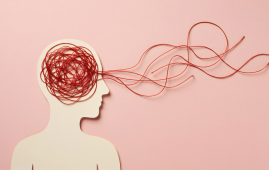

According to a JRC policy brief on the association between social media use and loneliness, passive consumption appears to exacerbate feelings of alienation.
Social media has become an inseparable aspect of everyday life. It promotes worldwide connectivity by letting people to communicate, collaborate, and exchange thoughts, photographs, and ideas. It has altered how individuals develop relationships and communities by breaking down geographical and other obstacles, as well as enabling constant communication with friends and family, allowing for immediate and interactive answers.
However, for many, particularly younger users, social media tends to provide a more complex conclusion. In-person conversations have decreased in tandem with a dramatic increase in time spent online, prompting many to question the potential influence of social media on overall well-being and loneliness in particular.
The JRC’s policy brief Loneliness and Social Media Use in the European Union is the first European-level investigation of social media use trends and the link between heavy social media use and loneliness. The data is taken from the 2022 EU-wide study on loneliness (EU-LS) performed by the JRC, and demonstrates that, when it comes to the loneliness experienced by young Europeans, it’s not so much the hours spent on social platforms that matter most.
Social Media Passive scrolling versus active participation
According to the JRC study, which looks at social media use trends across Europe, around 34.5% and 26.1% of respondents aged 16-30 spend more than two hours each day on social networking sites and instant messaging apps, respectively. Furthermore, more than one-third of young responders exhibit characteristics consistent with social media addiction, such as abandoning work, family, or school for social media use many times per week. These figures are much lower for people over the age of 31.
The empirical research reveals that spending more than two hours per day on social networking sites is related with a significant rise in loneliness prevalence, but the findings also highlight an important differential. While excessive passive use of social media is associated with increased loneliness, there is no significant link between intensive use of instant messaging tools or active use of social media and loneliness.
This distinction emphasizes the importance of the type of involvement, rather than the amount of time spent on it, in determining whether social media has an influence on loneliness.
Policy Implications and Next Steps
The JRC’s findings are consistent with previous research on the subject and come at an especially timely time, as on the day of her election, European Commission President Ursula von der Leyen announced in the Political Guidelines for 2024-2029 that “an EU-wide inquiry on the broader impacts of social media on the well-being” of young people would be launched. Meanwhile, the JRC will continue its collaboration with the Commission’s Directorate-General for Employment, Social Affairs, and Inclusion to investigate the effects of teenagers’ social media habits on their well-being, mental health, and academic accomplishment.
For more information: European Commission
more recommended stories
 Ultramarathon Physiology: What HCPs Should Know?
Ultramarathon Physiology: What HCPs Should Know?Ultramarathon Metabolism: What Happens to the.
 High-Intensity Training and Oxidative Stress Insights
High-Intensity Training and Oxidative Stress InsightsNew Evidence Linking High-Intensity Training and.
 Sterilized Fermented Beverage for Obesity: New Evidence
Sterilized Fermented Beverage for Obesity: New EvidenceEarly Insights Into a Sterilized Fermented.
 36-Week Pre-eclampsia Screening May Reduce Term Risk
36-Week Pre-eclampsia Screening May Reduce Term RiskA New Preventive Strategy for Term.
 Cardiovascular Risk and Sudden Cardiac Death in Diabetes
Cardiovascular Risk and Sudden Cardiac Death in DiabetesRising Sudden Cardiac Death (SCD) Risk.
 Poor Kidney Function and Alzheimer’s Biomarkers Explained
Poor Kidney Function and Alzheimer’s Biomarkers ExplainedPoor kidney function may influence levels.
 Perinatal Mental Health Challenges Highlighted in New Study
Perinatal Mental Health Challenges Highlighted in New StudyMental Health Challenges in New Parents:.
 Walking Speed Before Hip Replacement Predicts Recovery
Walking Speed Before Hip Replacement Predicts RecoveryNew Evidence Points to a Simple,.
 Neuroblastoma Drug Combo Extends Survival in Models
Neuroblastoma Drug Combo Extends Survival in ModelsA Promising Shift in High-Risk Neuroblastoma.
 How Soybean Oil Impacts Weight Gain and Metabolism
How Soybean Oil Impacts Weight Gain and MetabolismWhy Soybean Oil May Affect Metabolism.

Leave a Comment